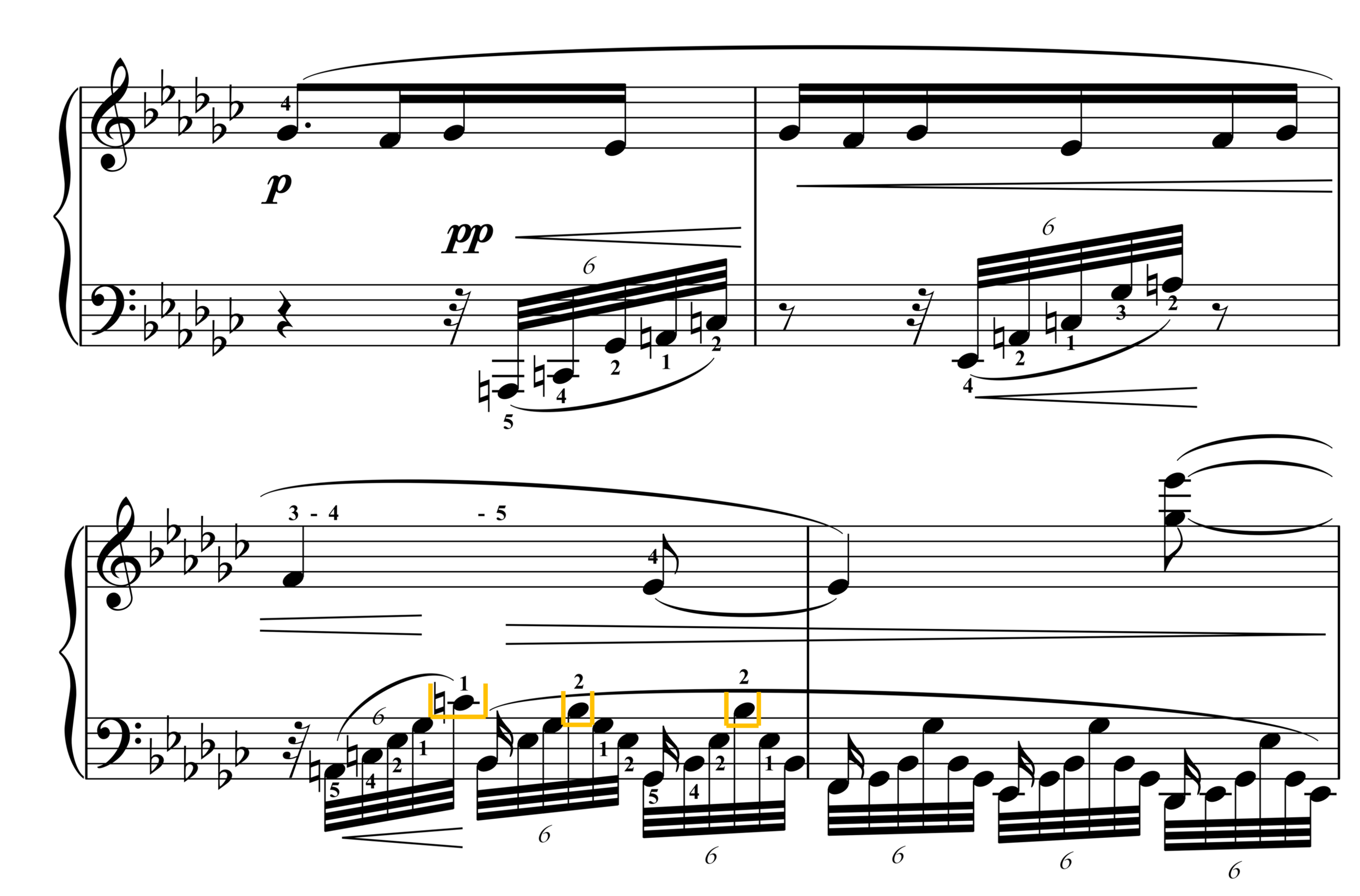“Playing the top note of the sixths with the right hand eliminates the stretch and allows greater control of the various articulations.”
Submitted by Michael Clark
Published on 1/1/2020

“Playing the top note of the sixths with the right hand eliminates the stretch and allows greater control of the various articulations.”
Submitted by Michael Clark
Published on 1/1/2020

“The leap down to the B-flat is treacherous, and it can be difficult to play it with satisfactory power. Taking it in the right hand eliminates the leap and assures a strong delivery.”
Submitted by Michael Clark with thanks to Robert Roux
Published on 4/18/2020

Submitted by Jun Guo
Published on 5/14/2020

“When possible, it’s nice to reduce the stretch in the left hand by grabbing the top note in the right.”
Submitted by Michael Clark
Published on 1/1/2020

“When possible, it’s nice to reduce the stretch in the left hand by grabbing the top note in the right.”
Submitted by Michael Clark
Published on 1/1/2020

“The top notes of this widely spaced accompaniment can be incorporated into the right hand.”
Submitted by Michael Clark with thanks to Jennifer Hayghe
Published on 1/1/2020

“The right hand is already on this C at the end of the previous measure, and playing it again with the right hand breaks up the left hand into two more manageable positions.”
Submitted by Michael Clark
Published on 3/17/2020

“The left hand accompaniment is already plenty wide. I find taking an extra note in the right hand is a relief.”
Submitted by Michael Clark
Published on 1/1/2020

Submitted by Jake Holtzman with thanks to Anton Nel
Published on 12/31/2021

Submitted by Josh Condon
Published on 6/15/2020

“This wide left-hand accompaniment reaches up into the right-hand register, allowing several notes to be more comfortably taken by the right hand.”
Submitted by Michael Clark
Published on 3/15/2020

“Taking these notes in the right hand helps differentiate the voices and eliminates the need to stretch or leap to them.”
Submitted by Michael Clark
Published on 3/15/2020

“The top note of this especially wide chord can be played with the right hand.”
Submitted by Michael Clark with thanks to Jennifer Hayghe
Published on 1/1/2020

“Taking this inner voice with the right hand saves the left hand from many awkward shifts.
Submitted by Michael Clark
Published on 1/1/2020
Fingerings in Italics are Liszt’s.

“The first note of these triplets can always be taken with the right hand to avoid stretching or rolling.”
Submitted by Michael Clark
Published on 1/1/2020
Fingerings in Italics are Liszt’s.

“Playing the D in the left hand requires a wide leap that can be avoided by taking the D in the right hand.”
Submitted by Michael Clark
Published on 1/1/2020

“Taking the top notes of these large rolls in the right hand allows for the bass note to be held for a clearer pedal change.”
Submitted by Michael Clark
Published on 1/1/2020

“Taking the top notes of these large rolls in the right hand allows for the bass note to be held for a clearer pedal change.”
Submitted by Michael Clark
Published on 8/11/2021